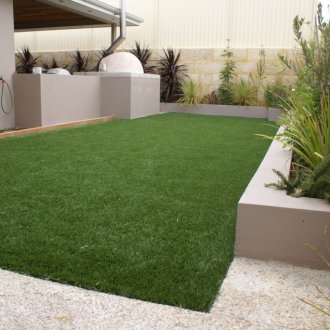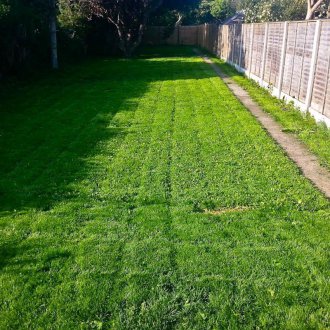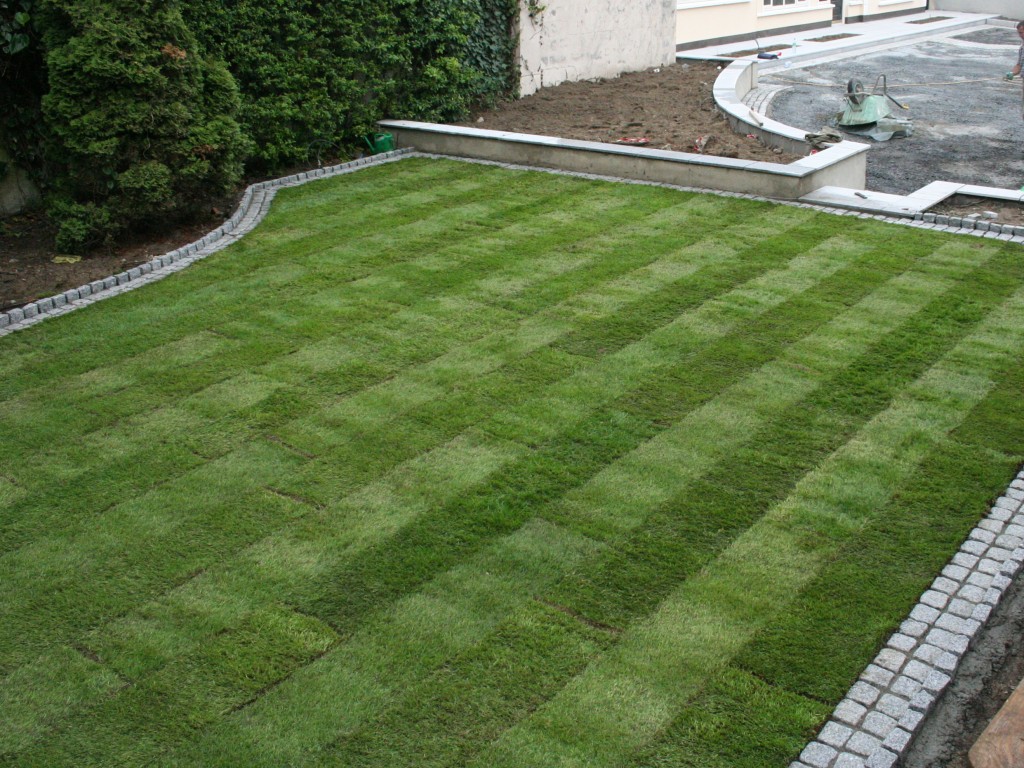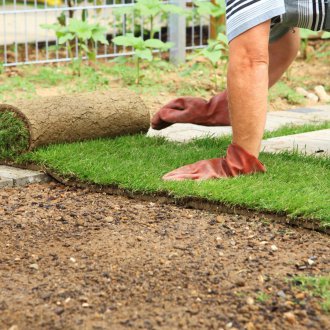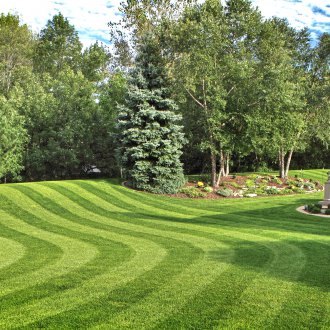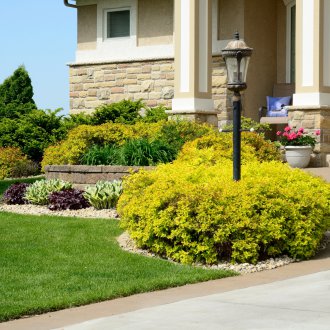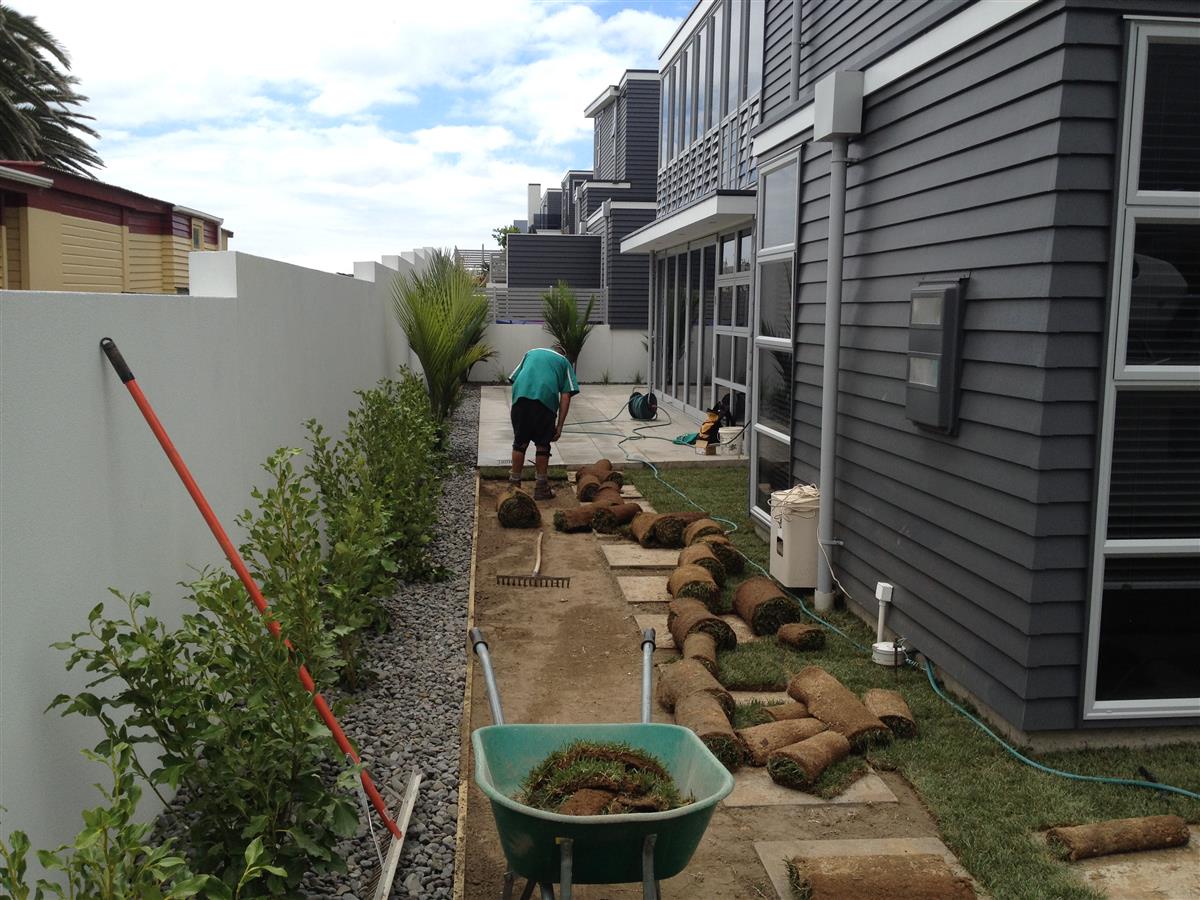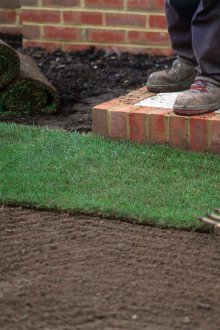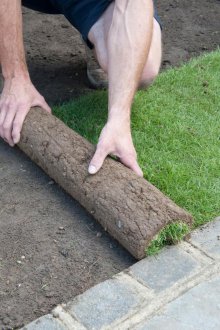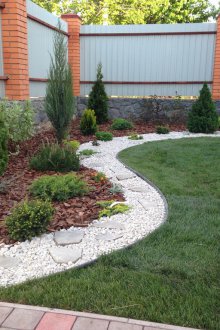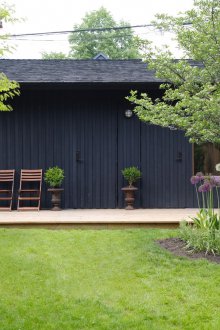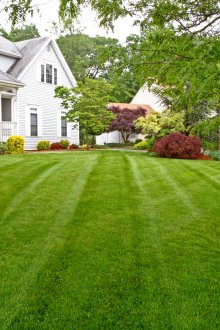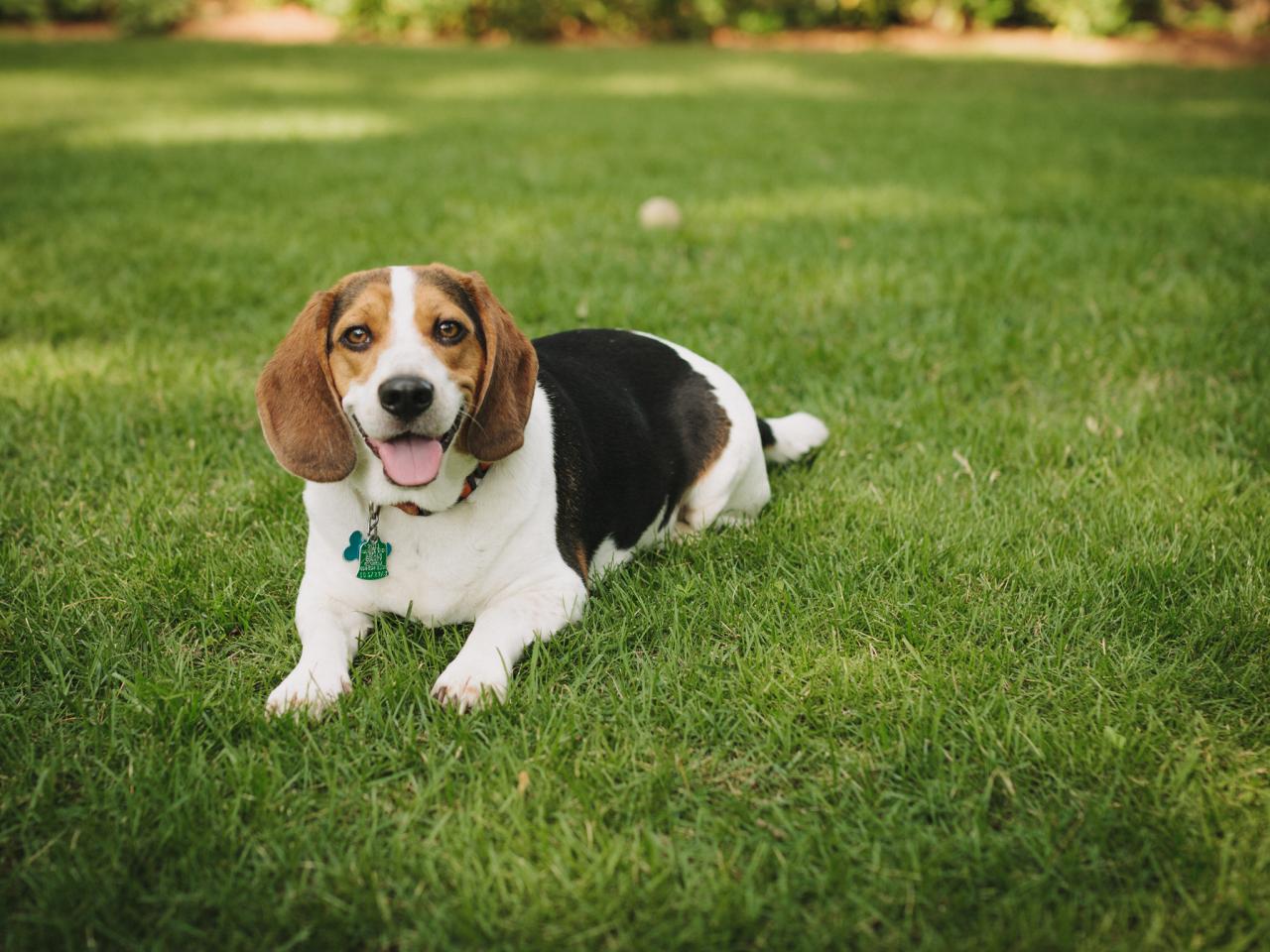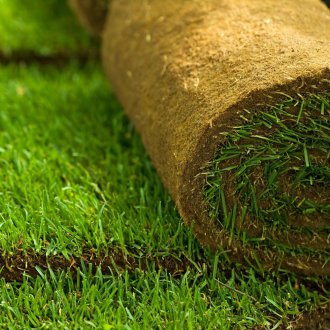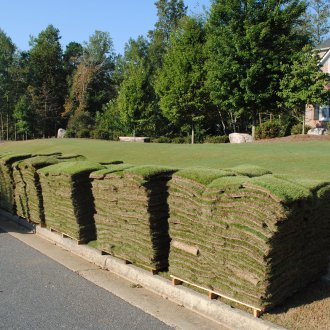Rolled lawn: how to make your site perfect (20 photos)
Content
Rolled lawn is a special coating that is created by laying layers of finished turf with already sprouted grass seeds. Among all varieties of landscape design, this type is the most popular. Many are interested in how to make a rolled lawn. However, it is much easier to buy, and only then provide the coating with proper care.
What is the secret of popularity
Rolled "artificial" lawn appeared in the 30s of the last century in America. Then the tradition of laying the finished canvas made of grass was gladly continued by many countries of Europe.
A rolled lawn is a real find for all those who do not want to wait long for grass to be greened on the site itself. So-called “turf mats” are formed by sowing seeds of lawn grass. They are fixed on a lawn mesh basis.
All that the buyer needs to do is prepare the site and lay a “living” rug. Already after 10-14 days, the area near the house where the grass sheet was placed will noticeably change.
Species diversity
The lawn, as such, can be presented in different forms and variations. The most popular types of rolled lawn:
- Elite look. This is the most spectacular “living” coating, which has a perfectly flat surface. The lawn requires proper care, as well as careful selection of plants that will be used directly next to the lawn cover;
- Standard view. The decorative type can be used as a spectacular platform for outdoor activities. Grass for a lawn of this species is not afraid of trampling. A mixture of seeds is formed in such a way that the finished “grass mat” is resistant to temperature changes, is beautiful and has pleased its appearance for many years;
- City view. It is also called sports or universal. It consists of herbs that carry significant physical exertion.
Laying a rolled lawn is quite quick, the desired effect will also not take long. However, whatever the type of gardening is, a rolled lawn after laying needs careful maintenance.
Main advantages and possible disadvantages
The advantages of the “green rug” are hard to overestimate. In just a few days, you can radically modify a fairly large area. In addition, it is worth noting the following advantages of a rolled lawn:
- Due to the fact that the thickness of the turf is more than 3 centimeters, even those types of soil that are considered unsuitable for growing any crops can be covered with such a coating;
- Laying of a rolled lawn is possible not only on ideally flat platforms, but also on slopes and other specific locations;
- The dense web of sod does not allow weeds to germinate on the site;
- The service life of a rolled lawn under conditions of proper care is not less than that of other types of surface gardening;
- Anyone can put a rolled lawn with their own hands;
- Grass is a natural type of coating, a universal option for landscaping and beautification of any site.
In this case, all the disadvantages of a rolled lawn are actually absent.The only caveat: the relatively high price for high-quality goods of this profile.
Preparatory Activities
Before laying a rolled lawn, you should take care of the surface on which the "living mat" will grow. The site is carefully cleaned, removing construction and household waste. If previously planted lawn grass has grown on the site or there are many weeds, all plants are harvested. Do all the work you need carefully.
You can not throw turf. Thrifty owners often store such biomass, and then use it as compost. Site preparation also consists in the total extermination of all types of weeds. The following plants are considered the most malicious:
- Dream;
- Sow thistle;
- Mother and stepmother;
- Nettle;
- Wheatgrass;
- Plantain.
Where there is a particularly strong accumulation of weeds, it is necessary to use herbicides. Then they dig the soil, get rid of large lumps of earth.
Work with soil
Before laying a rolled lawn on a cleaned clay surface, it is worth laying a layer of sand and gravel (4 to 8 centimeters) on the soil. Even if you do not need to plant seeds in the soil itself, it is still worthwhile to improve the surface layer of the soil. It is necessary to give it more fertility, reduce the acidity of the soil, and also improve the structure itself.
There are several ways to make the grass better. One of the simplest and most effective is the introduction of complex mineral fertilizers at the rate of 50-60 g / m2. All work is carried out in dry sunny weather.
Acquisition and storage of lawn
The roll turf device is formed in such a way that immediately after the acquisition, the “turf mat” must be used for its intended purpose. Such a product cannot be stored for a long time. That is why in winter or early spring they do not buy rolled lawns.
As soon as the turf cloth was cut and transported to the territory, you need to put the lawn on the first day. The maximum shelf life is 2 days. Therefore, the preparation of soil for landscaping on the site should be carried out shortly before purchase.
Emergency measures
If it was not possible to spread the mat on the first day, you need to find a suitable place for the lawn. This must be a moderately cool area, where direct sunlight does not fall. If the weather is hot and arid, the plates are watered from time to time.
Caring for a rolled lawn in such extreme conditions is quite complicated, it requires a lot of time and effort. It’s not enough just to pour the plates with water. Each roll must be carefully opened and carefully moistened with sprouted soil. Another important nuance: if the coating is “overexposed” and not put on the site in a timely manner, then it will be much more difficult to take care of a rolled lawn.
Modern production allows you to form and deliver a rolled lawn to the site in integrity and safety. However, not a single trick will help to keep the cut “mat” folded for a long time.
The nuances of laying a lawn roll
The fact is already stipulated that the main advantage of a rolled lawn is the ability to quickly lay the canvases. You can work independently without attracting specialists.
The soil for a rolled lawn should be prepared 10-13 days before the actual planting. It is best to spread the canvases in the spring (the best time is April), in the summer, and also in early autumn. In winter, such a procedure is not carried out.
The ideal weather for work is dry, moderately hot. The earlier the roll turf was installed, the more carefully the scheme for regular watering of the green cover should be worked out.
The technology for working with rugs is quite simple. When all the surfaces on the site are prepared, the rolls are gently unfold and placed on those locations where they will be located all the time.
First, lay one layer and carefully tamp.Then the lawn is rolled in with a light roller, which will allow for more tight contact with the soil.
Problems you may encounter
The most common problem: the rolled lawn dries and turns yellow. Very often this is due to the fact that during transportation errors were made or the storage technology of the formations was not followed. In addition, many buyers do not know how to properly care for such a coating. Many believe that the work on the site is limited to only one landing, and the lawn will grow by itself, without the need for additional care.
This is far from the case. Only weeds can sprout on their own. All other crops and landscaping need careful care. So, if the lawn turns yellow or red (brown) spots appear on the grass, this may be caused by the following errors in operation and laying technology:
- Watering the canvas was uneven;
- When laying the “turf rug” was not sufficiently rolled to the ground, which means that it did not dock with the main soil;
- Poor drainage;
- Before planting the lawn, proper soil preparation was not performed.
Other problems may arise over time. Lawn carers often complain that grass is becoming rare. Also, against the background of a yellowed canvas, weeds may appear.
The main reason why there was a “baldness” on the lawn is a little light. Neighboring structures, fences, trees, and other structures can constantly cast shadows on the lawn. Also, if the lawn is not mowed often enough and is not fertilized (especially in spring), such a problem can also occur.
The lawn is a spectacular decoration of any site. However, he is very moody, requires careful attitude and careful leaving. If there is no time or opportunity to carry out the appropriate work on the site, it is better to abandon the acquisition of “live” paintings, and to purchase synthetic ones.
